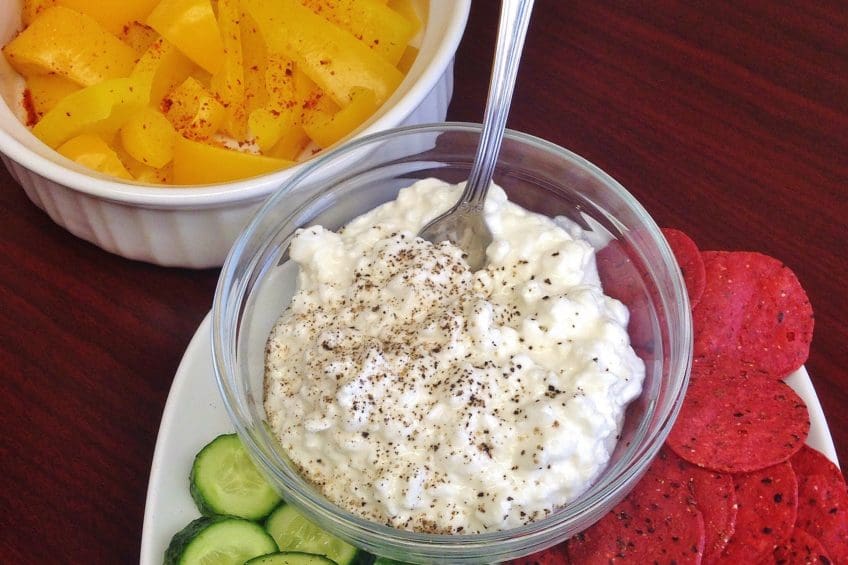Raina’s Lacto-ovo Vegetarian Diet Trial
You would be amazed at the number of times I hear, “this probably isn’t hard for you” or “I’m sure you don’t have this struggle” or “this is probably more work for me than it is for you.” I would just like to debunk those myths right now.
All of us at Revive are humans. I promise you, we all find it difficult to eat well and balanced and to keep our self-care as a priority. Sure we enjoy vegetables, but there are a lot of foods that are ‘less-than nutritious’ that we like to include in our diet. That is why our theme for Revive this year is ‘Keeping it Real.’ The goal with this theme is to highlight some of the areas where we struggle and the strategies we use in everyday life.
I have been blessed to not have any food allergies or intolerances. That is not the case for a lot of my clients. One of the areas I am looking to challenge myself is to trial different dietary restrictions and diet types so I can understand what my clients are going through. I’m going to eat a specific diet for a week and blog about my journey – my successes, frustrations, and strategies.
The first diet I tried was a lacto-ovo vegetarian diet. The only sources of protein I could include in my diet were plant-based, milk-based products and eggs. The challenge with most vegetarian diets is to replace the lack of protein without adding extra carbohydrates. You still need to hit the same balance of carbohydrates, protein, and fat at each meal. The lacto-ovo vegetarian diet allows you to consume all the essential amino acids needed to build proteins to fulfill the basic functions in our body (enzymes, hormones, immune system, building muscle, etc.). This is because eggs and dairy products are complete proteins.
To be honest, this diet was very easy until I got to dinner. I am a dairy-product lover, so it was no challenge to rely on Greek yogurt and cottage cheese for the majority of my protein. However, when it came to the evening meal, I struggled to think of something creative that wasn’t a repeat of lunch. As long as I made sure I hit my protein requirements at lunch and dinner, my energy was great. What I noticed was on the days I skipped the protein or just didn’t have enough, I started to graze in the afternoon and my cravings for carbohydrate and starchy foods increased significantly.
My staple sources of protein for a lacto-ovo vegetarian diet were:
- Plain Greek yogurt
- Cottage cheese
- Regular cheese
- Whey isolate protein powder
- Nuts (particularly unflavoured almonds)
- Eggs (scrambled, hard-boiled)
- Beans and legumes (cooked and roasted)
- Edamame beans (soybeans)
One of my greatest challenges was eating out or hosting guests for dinner. My first inclination was to avoid eating out, as I was unfamiliar with menus and where to go. A friend recommended a restaurant in Edmonton called Padmanadi’s and it was phenomenal. Because you can order individual dishes, I had no trouble meeting my balance of vegetables and carbohydrate, and tofu was my source of protein at that meal.
As for hosting a group for dinner, I felt a little uncomfortable inflicting my dietary choice on our guests, so I made some salmon filets for them and enjoyed the vegetables and grains on their own (I pre-ate cottage cheese before the meal). Cottage cheese was my quickest and easiest source of protein throughout this week. I typically had it for lunch and then aimed for an egg-based dinner.
Here’s what a sample day looked like for me:
Breakfast: Smoothie
- Plain Greek yogurt/whey protein isolate
- Berries/banana/mango
- Milk
- Ground flax seed
Morning snack:
- Almonds
- Fruit
Lunch: ‘Tapas’
- Crackers/beet chips
- Raw or cooked vegetables
- 0-2% cottage cheese
Afternoon snack:
- Roasted chickpeas/edamame beans
- Dried rhubarb (it’s actually delicious)
Dinner: Quinoa Vegetable Fried Rice
- Cooked quinoa
- Diced peppers/broccoli/cauliflower/grated carrot
- Scrambled eggs
- Feta cheese
The nutrients I ran the greatest risk of missing out on were omega-3 (no fish in this diet), iron, and vitamin D. Supplements are often necessary for this diet. We can attain omega-3 through ground flax seed and walnuts, but not in the quantities we require. Milk products are fortified with vitamin D, but I was only able to consume 1/3 of my daily requirements through food. I was only hitting approximately 50% of my daily iron requirements.
Being aware of the challenges different diets present is very significant when it comes to nutrition counselling. Hopefully these experiences allow me to be a better practitioner by walking a mile in my client’s shoes!

